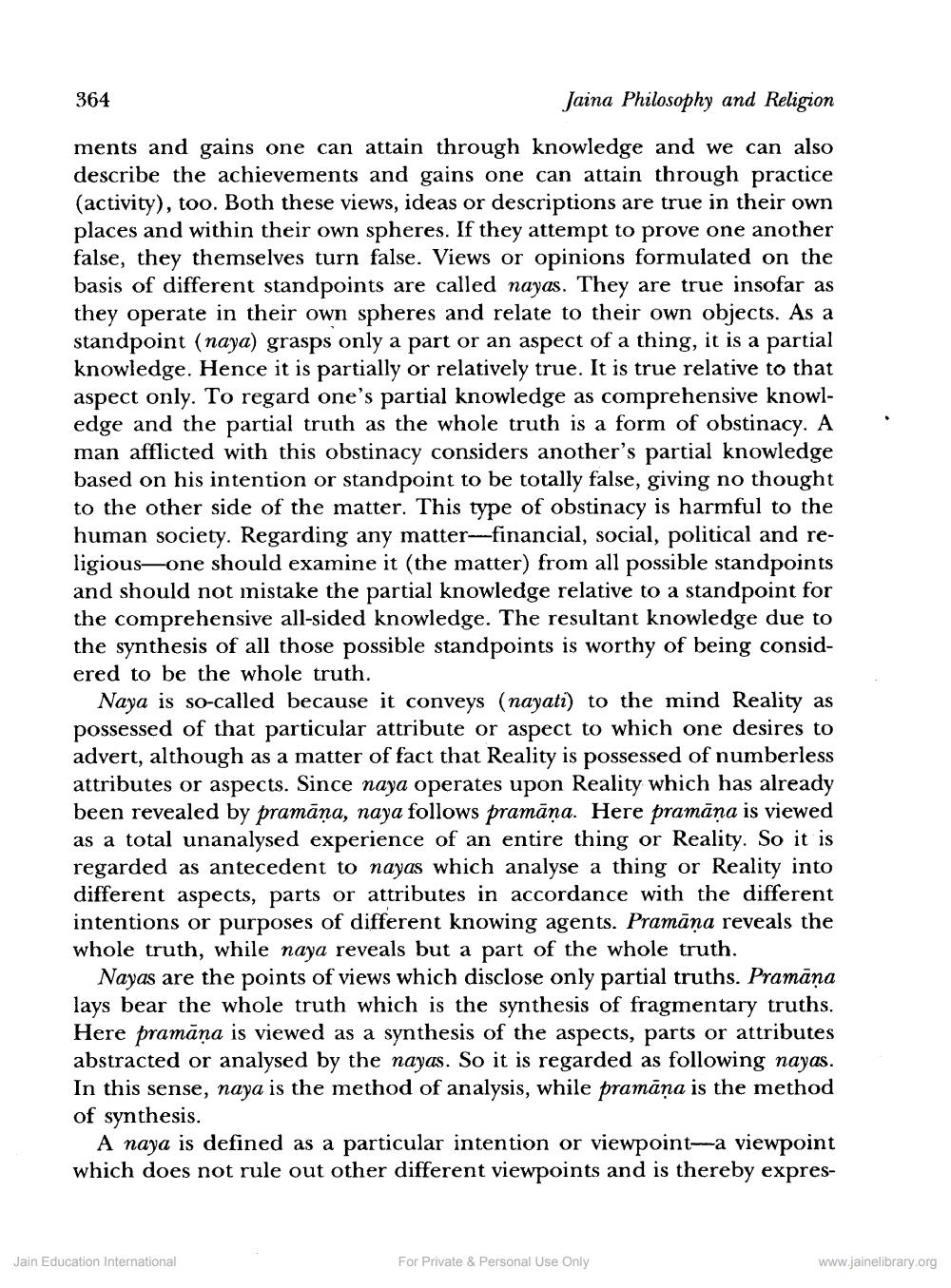________________
364
Jaina Philosophy and Religion
ments and gains one can attain through knowledge and we can also describe the achievements and gains one can attain through practice (activity), too. Both these views, ideas or descriptions are true in their own places and within their own spheres. If they attempt to prove one another false, they themselves turn false. Views or opinions formulated on the basis of different standpoints are called nayas. They are true insofar as they operate in their own spheres and relate to their own objects. As a standpoint (naya) grasps only a part or an aspect of a thing, it is a partial knowledge. Hence it is partially or relatively true. It is true relative to that aspect only. To regard one's partial knowledge as comprehensive knowledge and the partial truth as the whole truth is a form of obstinacy. A man afflicted with this obstinacy considers another's partial knowledge based on his intention or standpoint to be totally false, giving no thought to the other side of the matter. This type of obstinacy is harmful to the human society. Regarding any matter--financial, social, political and religious—one should examine it (the matter) from all possible standpoints and should not mistake the partial knowledge relative to a standpoint for the comprehensive all-sided knowledge. The resultant knowledge due to the synthesis of all those possible standpoints is worthy of being considered to be the whole truth.
Naya is so-called because it conveys (nayati) to the mind Reality as possessed of that particular attribute or aspect to which one desires to advert, although as a matter of fact that Reality is possessed of numberless attributes or aspects. Since naya operates upon Reality which has already been revealed by pramāņa, naya follows pramāņa. Here pramāna is viewed as a total unanalysed experience of an entire thing or Reality. So it is regarded as antecedent to nayas which analyse a thing or Reality into different aspects, parts or attributes in accordance with the different intentions or purposes of different knowing agents. Pramāna reveals the whole truth, while naya reveals but a part of the whole truth.
Nayas are the points of views which disclose only partial truths. Pramāna lays bear the whole truth which is the synthesis of fragmentary truths. Here pramāna is viewed as a synthesis of the aspects, parts or attributes abstracted or analysed by the nayas. So it is regarded as following nayas. In this sense, naya is the method of analysis, while pramāņa is the method of synthesis.
A naya is defined as a particular intention or viewpoint--a viewpoint which does not rule out other different viewpoints and is thereby expres
Jain Education International
For Private & Personal Use Only
www.jainelibrary.org




